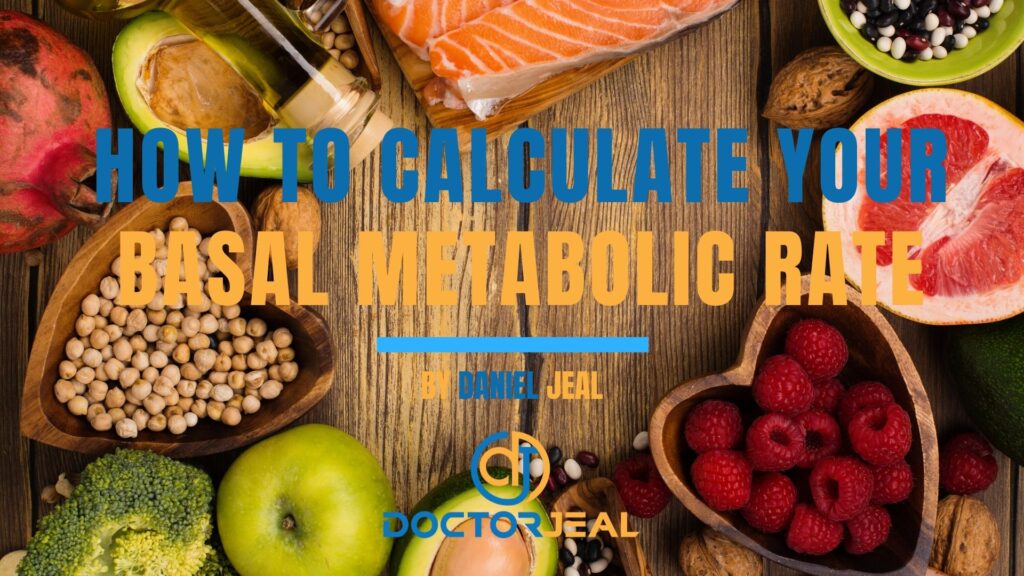Table of Contents
In order to establish how many calories you burn in a day you first need to calculate your Basal Metabolic Rate or RMR (Resting Metabolic Rate). It is simply the amount of energy required by your body to function if you were doing nothing all day.
Your body like any living thing requires energy, all the time, to function, whether at rest, exercising, working or reading a book your body will be consuming energy, this is your metabolic rate. Your metabolic rate is the rate in which your body outputs energy, usually expressed as a per hour figure.
BMR (Basal Metabolic Rate or RMR (Resting Metabolic Rate) then is the energy required to sustain normal bodily functions, that is, to breath, pump blood around the body, organs and cell function and to regulate body temperature, This would generally be what you would burn if you stayed in bed all day awake but not moving or doing anything. BMR is expressed as kilocalories per square meter of body surface per hour (kcal/m2/h). BMR is commonly reported as a daily figure, your resting metabolic rate x 24 giving a baseline guide of calories required per day, e.g 1771 (not including any physical activity).
BMR is a calorie amount that will be burned without doing anything. Unless you have scientific equipment handy, this will be calculated as an estimation using a formula and referred to as RMR (Resting Metabolic Rate).
Formulas for Calculating your Basal Metabolic Rate

Measuring our base level of energy expenditure (Basal Metabolic Rate) BMR requires a scientific test using either a calorimeter or a respirometer, most people don’t have these resources available to them and we, therefore, use a formula to estimate the Basal Metabolic Rate, this estimation is actually referred to as your Resting Metabolic Rate (RMR) essentially both BMR & RMR represent the same sum (the base level of energy expenditure) they are often used interchangeably with the difference being that BMR is the sum calculated under strict scientific conditions and much more accurate while RMR as an estimation using a formula and thus an approximate value and less accurate.
You can estimate your Basal Metabolic Rate via various formulas, some basic, some more complicated.
multiply your weight in kg by the factor ‘1’ for MALES and ‘0.9’ for FEMALES, than simply times this by 24 to give you your daily RMR
BASIC BMR FORMULA
Male BMR Formula
(W) X 1 X 24
Formula for Males
Female BMR Formula
(W) X 0.9 X 24
Formula for Females
Advanced BMR Formula
The formula from Katch-McArdle requires you to have the body fat & lean body fat percentages of the subject, taken via bioimpedance test in order to calculate your Basal Metabolic Rate.
370 + (21.6 x LBM)
Katch-McArdle BMT Formula
Body Composition & Basal Metabolic Rate
Your BMR value will account for around two-thirds of the energy consumption of an individual in one day. Therefore this is not the actual energy expenditure of an individual in one day only the basal energy level requirements however this value is used to calculate a person’s Daily Energy Expenditure (DEE). The more an individual weighs the more their BMR/RMR will be, however, body composition has a large role to play in BMR and RMR as lean muscle tissue is more metabolically active requiring more calories in order to maintain them while fat cells require much less. Therefore resistance training will increase an individuals BMR/RMR and thus aid weight control as metabolic rate increases. By studying healthy individuals, scientists have found that as people age, their metabolic rate changes. Basal metabolism rises as a child matures. After a peak at the age of 16 or 17, it typically starts to decrease gradually but will decline rapidly as skeletal muscle start to atrophy (reduce in size), this explains why those elderly who fail to adjust their calorific intake often gain weight.
The male/female difference
Metabolic rate is disproportionally higher in males than in females, males typically have a higher lean body percentage while fatty tissue is present in greater relative amounts in females which are metabolic sluggish.
Having a higher basal metabolism will increase the number of calories used and help to decrease the amount of body fat. A low basal metabolic rate will make it harder to lose body fat and overall weight.

